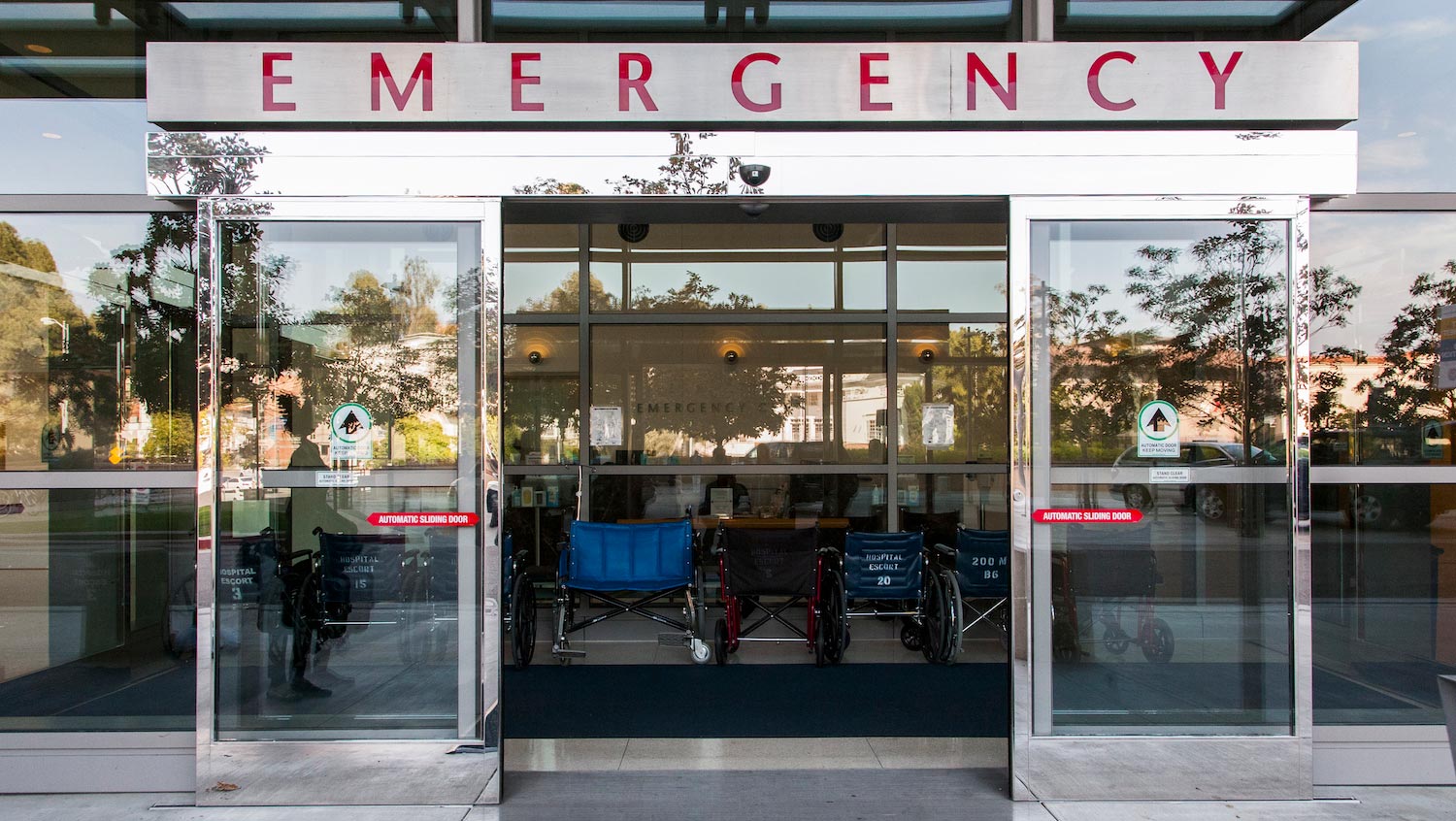Emergency Mental Health Services: A Growing Need
November 20, 2019

Getty Images
Tasha Ferguson, clinical director of BMC’s Emergency Services Program, reflects on how emergency service programs can streamline behavioral health care and relieve pressure on ED teams.
Demand for mental health services is surging across the country. In just under a decade, total emergency department (ED) visits related to mental health or substance use disorders (SUDs) have grown by nearly 45%. Meanwhile, access to behavioral health care lags behind.
The mismatch between supply and demand for behavioral health care has created a particular problem for the nation’s EDs. With about half of all EDs already facing overcrowding, they’re underequipped to address the influx of behavioral health patients — yet remain the catch-all option when patients don’t know where else to go or are experiencing an active crisis.
Part of the problem is that EDs generally lack sufficient behavioral health infrastructure. When someone arrives at the ED with a severe physical ailment, like cardiac failure, clients with behavioral health issues are often de-prioritized. It can take three times longer for mental health patients admitted to the ED to receive care than patients facing physical health problems. For underserved populations, issues like poverty or lack of transportation can make routine mental health care seem inaccessible — prompting repeated visits to the ED, even though it’s not an ideal place for behavioral health treatment.
When considering care outcomes, costs, and experience, it’s in the best interest of providers and patients to treat behavioral health needs outside the ED, according to Tasha Ferguson, the clinical director of Boston Medical Center’s Emergency Services Program (ESP).
Ferguson oversees emergency mental health services operations in several Massachusetts locations: Boston, Cambridge, Somerville, and Fall River. Since beginning her behavioral health career in 2008 as a mobile clinician with the Boston Emergency Services Team (BEST), Ferguson has worked to expand and develop crisis response services, particularly those for underserved patients. Crisis response teams aim to streamline behavioral health services, operating mobile and urgent care emergency mental health centers, which provide targeted behavioral health care and help prevent avoidable ED visits.
Ferguson recently spoke with HealthCity to offer her insights into the relationship between social determinants and mental health needs, public behavioral health awareness, and the evolution of crisis response.
HealthCity: In terms of care, what does BEST offer that emergency departments do not?
Tasha Ferguson: We have a focus on being knowledgeable about and connecting people to diversionary care. Community-based diversionary care is really the least restrictive setting that the person is able to be served in.
The experience of receiving behavioral health care in an emergency department is something a lot of consumers themselves have identified as difficult. You’re there typically for a long period of time, and if you’re not presenting with an acute medical issue, you’re triaged down the list.
When someone comes into a behavioral urgent care centers, patients presenting with a behavioral health need are being seen for just that. If something comes up concerning physical health or a potential medical need, we can bring in medical providers. But in working with ESTs, patients are being seen for their complaint first.
HC: Why has BEST made it a focus to provide mental health crisis supports to uninsured or MassHealth patients?
TF: Just by definition, many people in those groups have additional burdens that other people may not experience, including lack of access to basic resources and the additional psychosocial stress that accompanies belonging to a disenfranchised group. Those patients are going to be at a potentially higher risk of experiencing the behavioral health effects.
For our patient population, it’s often difficult to access treatment. Even if you’re in an emotional place where you’re ready to receive treatment, you may not have access to private transportation or be able to afford a ride on public transportation. People may work more than one job and have difficulty traveling to a site-based service.
“Even if you’re in an emotional place where you’re ready to receive treatment, you may face barriers that make it difficult to operate within a standard behavioral health environment.”
Mobile crisis units give people real access to an evaluation and intervention process that is difficult for them to achieve if they had to operate within a standard behavioral health environment. Mobile units are a bit more flexible in having someone come out to see patients at their home when they’re available — whether that means nights, weekends, holidays, etc.
HC: How does crisis response differ from first response?
TF: Emergency Services here at Boston Medical Center employs co-responder clinicians who have a full-time role of accompanying the Boston police. They’re in squad cars with officers going to a service call in the community, proving behavioral health interventions, hopefully diverting people from unnecessary emergency department visits.
I would say, maybe somewhat tongue-in-cheek, that we’re second responders. I think the differentiation is that first responders are providing, largely, a public safety response. Once the scene is secure and we’re certain the person doesn’t have acute medical needs, that’s the point at which BEST is able to join the situation and work closely with the first responders and the individual in need to perform our services.
HC: Why is there a need for co-responders in addition to first responders?
TF: Having co-responder clinicians as a non-police presence can help to deescalate a situation. People have different responses to a uniformed officer than they might to a plain-clothes mental health clinician.
When it’s our general mobile team, we’re having lots of different conversations. What is the situation? What are the potential safety concerns? We can act as an advocate to make sure that the police respond with all the information necessary for a safe and appropriate outcome.
Our manager of our criminal justice diversion branch, which includes co-responders, actually participates in the academy training for all new officers and offers a session of behavioral health and service utilization. We also trained all of the 911 dispatch staff on the cues to listen for when they’re receiving a call to make sure it’s appropriately coded if there is a potential behavioral health issue.
HC: Why do you think people aren’t as aware of behavioral health emergency services as they are of traditional emergency services?
TF: Any behavioral health crisis response that’s not tied directly to a statewide 911 number is likely going to be at a little bit of a disadvantage. That’s what people know when they’re in trouble.
But if you activate 911 from your home, the only place they’re allowed to drop you off is an emergency department. People are still directed to EDs by these pervasive external processes.
It’s always an ongoing educational process to make sure the community is aware of our services. We focus a lot on places where people already seek help. We talk to a lot of primary care clinics, to other behavioral health providers in the community. We talk to schools pretty extensively to make them aware of how to utilize our services.
HC: As crisis response continues to evolve, what changes do you hope to see?
TF: There has already been a shift in terms of requirements for in-state insurances offering crisis intervention to members who are 18 and under, which means commercial insurers now authorize these services for all of those insured members — a great first start. Unfortunately, it doesn’t apply to coverage for anybody who’s over 18 or those with out-of-state insurance. So, there’s still going to be a split system, but at least we’re moving in the right direction.
For many patients with commercial insurance, you need a referral from someone who’s in-network to receive specialty care services. We are not providers in those networks, so we can’t make those referrals, which means we are often unable to connect people to the services we might recommend for them, which is not effectively serving those clients.
“The idea is hopefully to have a ‘no wrong door’ policy.”
The idea is hopefully to have a “no wrong door” policy, so that people can have access to urgent behavioral health services whenever they need them. We have to continue to break down these care barriers and make behavioral health services more available and accessible to the people in need of them.
This interview has been edited and condensed.


